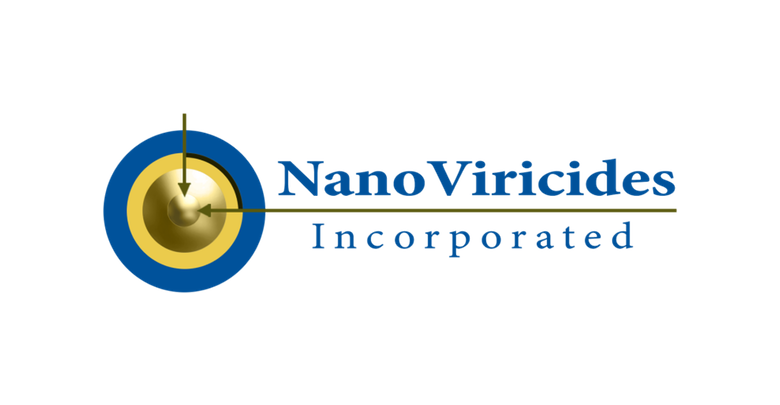NanoViricides Announces COVID-19 Clinical Drug Candidate NV-CoV-2 was Effective Against SARS-CoV-2, Further Demonstrating Its Broad-Spectrum Pan-Coronavirus Activity

Shelton, Connecticut — (October 11, 2021) – NanoViricides, Inc. (NYSE American: NNVC) (the “Company”), a leader in the development of highly effective antiviral therapies based on a novel nanomedicines technology,announced today that its Pan-Coronavirus COVID-19 Drug Candidate
NV-CoV-2 was found to be effective against SARS-CoV-2 in a standard cell culture pseudovirion assay, demonstrating that the drug indeed has broad-spectrum pan-coronavirus activity. This pan-coronavirus activity implies that the drug NV-CoV-2 should remain active in spite of evolution of variants of
SARS-CoV-2 in the field, a highly sought-after characteristic to combat the current global pandemic.
In this assay, both the drug candidate NV-CoV-2 and a positive control antibody specific to the Spike antigen S1 of the SARS-CoV-2 virus suppressed the infection by the SARS-CoV-2-pseudovirions in cell culture studies to virtually the same baseline levels.
We have now demonstrated that NV-CoV-2 is highly effective in cell cultures against SARS-CoV-2, human coronavirus NL-63, and human coronavirus 229E, all very different human coronaviruses. These results imply that the drug will remain active in spite of novel variants of SARS-CoV-2 evolution in the field, and indeed demonstrate the pan-coronavirus activity of our clinical drug candidate NV-CoV-2.
Additionally, the pseudovirion study also showed that NV-CoV-2 neutralizes the virus particles themselves, outside of the cells, validating our design mechanism.
“We are now preparing submission documents to enable initiation of human clinical trials,” commented Dr. Anil Diwan, Chairman and President of the Company, adding, “We believe that NV-CoV-2 may help end the pandemic if it is shown to be effective in human clinical trials.”
A strong SARS-CoV-2 infection inhibition activity of NV-CoV-2 was observed in this pseudovirion study. Pseudovirion assay is a standard method for evaluating virus entry-inhibitors in BSL2 laboratories and is primarily used for viruses that would otherwise require high security BSL3 or BSL4 laboratories. In this study, SARS-CoV-2-pseudovirion virus particles were made that carry a green fluorescent protein (GFP) producer mRNA inside, and use the SARS-CoV-2 S1 protein on their surface to bind to ACE2 receptor protein on cells. They were incubated with NV-CoV-2 (test article), or a known neutralizing antibody (positive control), or just the vehicle buffer (negative control). Then these solutions were separately used to infect ACE2 positive cells and the cultures were incubated. Only the infected cells produced GFP and were visualized by green fluorescence in microscopy. In this well-known assay, NV-CoV-2 was as effective as the neutralizing antibody in reducing the virus infection. This study demonstrates that NV-CoV-2 attacks the SARS-CoV-2 pseudovirion particles and renders them incapable of binding to the ACE2 positive cells.
A “pseudovirion” is a virus particle made of a BSL-2 virus shell, but with its original cell-binding protein replaced by the cell binding protein of a BSL3 or BSL4 virus, in this case, the S1 antigen of
SARS-CoV-2. Additionally, the pseudovirion particle contains an mRNA that is packaged like the original virus, except that the mRNA is edited and redesigned so that it cannot produce infectious virus particles. In our study, this mRNA allowed expression and production of the green fluorescent protein (GFP) enabling visual detection of the infected cells (green) in microscopy.
About NanoViricides
NanoViricides, Inc. (the “Company”) (http://www.nanoviricides.com) is a development stage company that is creating special purpose nanomaterials for antiviral therapy. The Company’s novel nanoviricide® class of drug candidates are designed to specifically attack enveloped virus particles and to dismantle them. We are developing clinical candidates for the treatment of COVID-19 disease caused by SARS-CoV-2 coronavirus. Our other lead drug candidate is NV-HHV-101 with its first indication as dermal topical cream for the treatment of shingles rash. In addition, the Company has several antiviral programs in various pre-clinical stages.
The Company is now working on tasks for completing an IND application for its COVID-19 drug candidates. The Company cannot project an exact date for filing an IND for this drug because of its dependence on a number of external collaborators and consultants. The Company is currently pursuing two separate drug candidates for the treatment of COVID-19 patients. NV-CoV-2 is our nanoviricide drug candidate that does not encapsulate remdesivir. NV-CoV-2-R is our other drug candidate that is made up of NV-CoV-2 with remdesivir encapsulated in it. The Company believes that since remdesivir is already US FDA approved, our drug candidate encapsulating remdesivir is likely to be an approvable drug, if safety is comparable. Remdesivir is developed by Gilead. The Company has developed both of its own drug candidates NV-CoV-2 and NV-CoV-2-R independently.
The Company intends to re-engage into an IND application to the US FDA for NV-HHV-101 drug candidate for the treatment of shingles once its COVID-19 project moves into clinical trials, based on resources availability. The NV-HHV-101 program was slowed down because of the effects of recent COVID-19 restrictions, and re-prioritization for COVID-19 drug development work.
The Company is also developing drugs against a number of viral diseases including oral and genital Herpes, viral diseases of the eye including EKC and herpes keratitis, H1N1 swine flu, H5N1 bird flu, seasonal Influenza, HIV, Hepatitis C, Rabies, Dengue fever, and Ebola virus, among others. NanoViricides’ platform technology and programs are based on the TheraCour® nanomedicine technology of TheraCour, which TheraCour licenses from AllExcel. NanoViricides holds a worldwide exclusive perpetual license to this technology for several drugs with specific targeting mechanisms in perpetuity for the treatment of the following human viral diseases: human Coronavirus infections, Human Immunodeficiency Virus (HIV/AIDS), Hepatitis B Virus (HBV), Hepatitis C Virus (HCV), Rabies, Herpes Simplex Virus (HSV-1 and HSV-2), Varicella-Zoster Virus (VZV), Influenza and Asian Bird Flu Virus, Dengue viruses, Japanese Encephalitis virus, West Nile Virus and Ebola/Marburg viruses. The Company’s technology is based on broad, exclusive, sub-licensable, field licenses to drugs developed in these areas from TheraCour Pharma, Inc. The Company’s business model is based on licensing technology from TheraCour Pharma Inc. for specific application verticals of specific viruses, as established at its foundation in 2005.
As is customary, the Company must state the risk factor that the path to typical drug development of any pharmaceutical product is extremely lengthy and requires substantial capital. As with any drug development efforts by any company, there can be no assurance at this time that any of the Company’s pharmaceutical candidates would show sufficient effectiveness and safety for human clinical development. Further, there can be no assurance at this time that successful results against coronavirus in our lab will lead to successful clinical trials or a successful pharmaceutical product.
This press release contains forward-looking statements that reflect the Company’s current expectation regarding future events. Actual events could differ materially and substantially from those projected herein and depend on a number of factors. Certain statements in this release, and other written or oral statements made by NanoViricides, Inc. are “forward-looking statements” within the meaning of Section 27A of the Securities Act of 1933 and Section 21E of the Securities Exchange Act of 1934. You should not place undue reliance on forward-looking statements since they involve known and unknown risks, uncertainties and other factors that are, in some cases, beyond the Company’s control and which could, and likely will, materially affect actual results, levels of activity, performance or achievements. The Company assumes no obligation to publicly update or revise these forward-looking statements for any reason, or to update the reasons actual results could differ materially from those anticipated in these forward-looking statements, even if new information becomes available in the future. Important factors that could cause actual results to differ materially from the company’s expectations include, but are not limited to, those factors that are disclosed under the heading “Risk Factors” and elsewhere in documents filed by the company from time to time with the United States Securities and Exchange Commission and other regulatory authorities. Although it is not possible to predict or identify all such factors, they may include the following: demonstration and proof of principle in preclinical trials that a nanoviricide is safe and effective; successful development of our product candidates; our ability to seek and obtain regulatory approvals, including with respect to the indications we are seeking; the successful commercialization of our product candidates; and market acceptance of our products.
FDA refers to US Food and Drug Administration. IND application refers to “Investigational New Drug” application. cGMP refers to current Good Manufacturing Practices. CMC refers to “Chemistry, Manufacture, and Controls”. CHMP refers to the Committee for Medicinal Products for Human Use, which is the European Medicines Agency’s (EMA) committee responsible for human medicines.
Contact:
NanoViricides, Inc.



